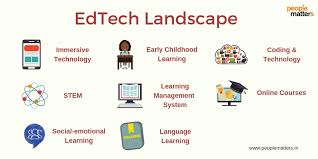🎓 Introduction
By 2025, India’s education landscape has been revolutionized by the rise of EdTech. Online learning platforms are providing students with unprecedented access to quality education, personalized learning experiences, and global opportunities. This article examines how EdTech is transforming the way India learns, teaches, and prepares for the future.
📚 Current Trends in EdTech
- Personalized learning powered by AI and adaptive algorithms.
- Widespread use of interactive video lectures, live classes, and gamified content.
- Growth of skilling platforms for coding, digital marketing, and other job-ready skills.
- Multilingual content reaching learners in rural and regional areas.
🧑💻 Popular EdTech Platforms in India
- BYJU’S, Unacademy, Vedantu, Physics Wallah, and UpGrad leading the mainstream academic and skill-based learning markets.
- Coursera, Khan Academy, Skillshare, and other global platforms offering certifications and micro-degrees.
- Expansion of B2B EdTech for corporate training and upskilling.
🏛️ Government Support
- NEP 2020 promoting digital learning and flexible curriculum frameworks.
- Launch of DIKSHA and SWAYAM platforms offering free, high-quality learning resources.
- Partnerships with private EdTech firms for blended learning in public schools.
- Digital India campaign improving internet access and digital infrastructure.
⚠️ Challenges
- Digital divide affecting low-income and rural students.
- Concerns over screen time, data privacy, and content quality.
- Need for trained educators to adapt to digital teaching.
- Balancing affordability with high-quality content.
🚀 Future Outlook
- Rise of virtual reality (VR) and augmented reality (AR) in classrooms.
- Growth in edutainment combining education with entertainment.
- Expansion of global collaborations and credential recognition.
- Increasing focus on life skills, emotional intelligence, and real-world problem-solving.
🧠 Final Thought
The EdTech boom in India is democratizing education and redefining what it means to learn in the 21st century. With inclusive policies and innovation, the benefits of online learning can be extended to every corner of the country.































































